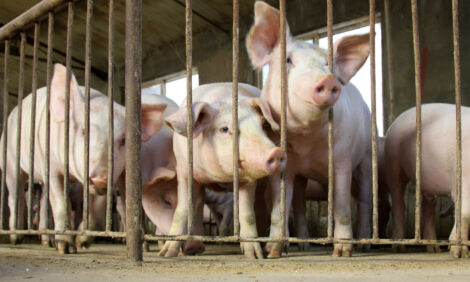



Market Preview: The Case of the Vanishing Pigs
US - Weekly US Market Preview provided by Steve R. Meyer, Ph.D., Paragon Economics, Inc.Where have all the pigs gone? Or better yet, were those pigs ever really here? Those are the questions circulating through the industry the past few weeks as federally inspected (FI) slaughter totals fell far below the expected levels, then recovered somewhat last week (see Figure 1).

It appears to me that there are three possible answers to the questions:
- USDA simply overcounted the pigs in the March survey and Hogs & Pigs report. That would be a real surprise since the 1 March inventories were already lower than most analysts expected. Some categories were, in fact, much lower than expected. Could it be that the numbers were still far too high? It’s always possible in a process which involves inferring information for an entire population from a statistical sample. USDA’s statisticians face their greatest challenge in getting the numbers right when the industry is in some sort of transition and 2009-2010 is such a period.
- We may finally be seeing the cessation of pigs coming from some large farms that stopped breeding last summer. Smithfield’s Texas operations and North Carolina-based Coharie Farms come to mind. And, there were other large sow units that ceased breeding last summer. Now would just about be the time for those pigs to reach market weight.
- Producers see higher and higher prices and are still battling slow weight gains and may have simply waited to sell some pigs – almost certainly profit-maximizing behavior given current slack finishing space. While appearing large in Figure 1, the 86,000-head shortfall vs. the forecast for the week of 9 April was only two hour's worth of pigs through US slaughter plants. The 50,000-head shortfall would be a little over one-hour’s worth of slaughter operations. So, relative to total supplies, we’re not talking a large number of hogs; a number easily small enough to be the result of just a few producers’ decisions.
But most producers are not terribly concerned with the answers to those questions as cash hog prices have exploded. Last week’s national negotiated net price – the best thing we have for a national spot market value for market hogs – of $82.97 was the fourth highest since mandatory price reporting (MPR) began in 2002 (Figure 2).

There are a few pre-MPR liveweight prices from 1983, 1986, 1987 and 1990 that were higher when adjusted to a carcass-weight basis, but not very many.
Give Some Credit to Product Values
What is driving the increase in hog prices? Short supplies certainly help but higher product values are, in my opinion, the big reason for this run-up in hog prices. Are the higher product values driven by lower supplies? Sure, but that relationship is not immediate and would not have this large of an impact without relatively strong demand, in my opinion.
I don’t mean to bury you with charts this week, but Figures 3 through 6 clearly demonstrate that virtually every cut has pushed hog values higher in recent weeks. Even the prices of cuts not shown here – butts, picnics and spareribs – have increased substantially since 1 March.




And there may very well be more to come. The hog price chart is obviously not suggesting that a top is at hand. Neither is the cutout value chart. Ditto for loins, trimmings and bellies. Hams are a bit of a question mark since Mexico is usually the driving force behind hams at this time of year and the price-sensitivity of the Mexican market raises serious questions about just how long they may remain buyers.
The Choice beef cutout value gained another $1.04/cwt. last week. Eastern hen turkeys gained over $2/cwt. Composite chicken prices, boneless/skinless breasts and wings all lost some ground last week, but legs were quoted 7.4 per cent higher – very likely the result of renewed interest from Russian buyers.
CME Signals
With all of that said, this morning’s action in Chicago Mercantile Exchange (CME) Lean Hog (LH) futures is a bit concerning. Every contract from June forward broke below its 10-day moving average. While that is by no means a sure-fire sell signal, it marks the first such occurrence for all of these contracts since the pre-Hogs & Pigs report selloff the last week of March. You could do much worse than $84+ summer hogs and $73+ fall hogs. Both of those numbers offer handy profits relative to breakevens in the $63-$66/cwt. carcass range.
History tells us that these summer contracts usually peak in mid-May barring, of course, anything goofy like a misnamed human influenza virus. Without a recurrence of such a catastrophe, these prices may run a bit higher over the next two weeks – but will they go enough higher to make saying “no” to today’s prices a wise decision?









